
Vantablack is supposedly the darkest substance ever made, and this is because it absorbs up to 99.965% of radiation in the visible spectrum of light. It’s made out of a forest of vertical tubes that are grown on a substrate using a modified version of a chemical process called chemical vapor deposition.
It can only be created at temperatures that are higher than 400C, so it can only be “grown” on substances that are capable of withstanding very high temperatures. Another interesting property that the material has is its ability to trap visible light and bounce it around among the nanotubes that make up the substance. This light eventually becomes absorbed and is dissipated into heat.
Vantablack’s unique properties have resulted in it being used in satellites and telescopes to eliminate stray light, and artists, designers, and other creatives are also falling over themselves to get their hands on it. Here’s a closer look at this wondrous material:

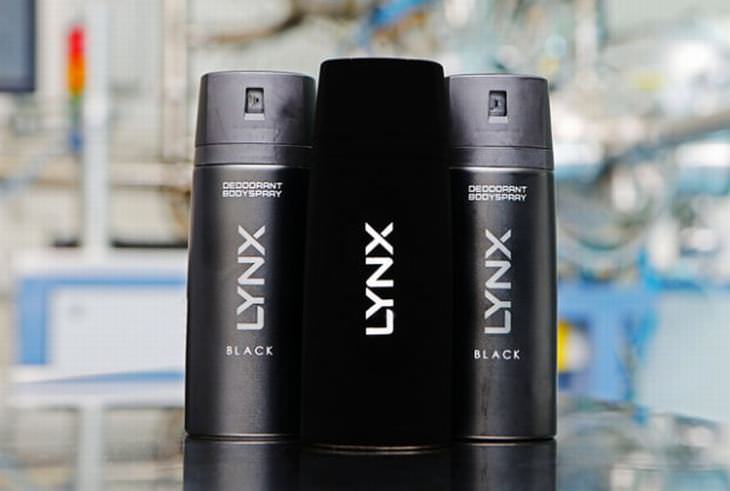
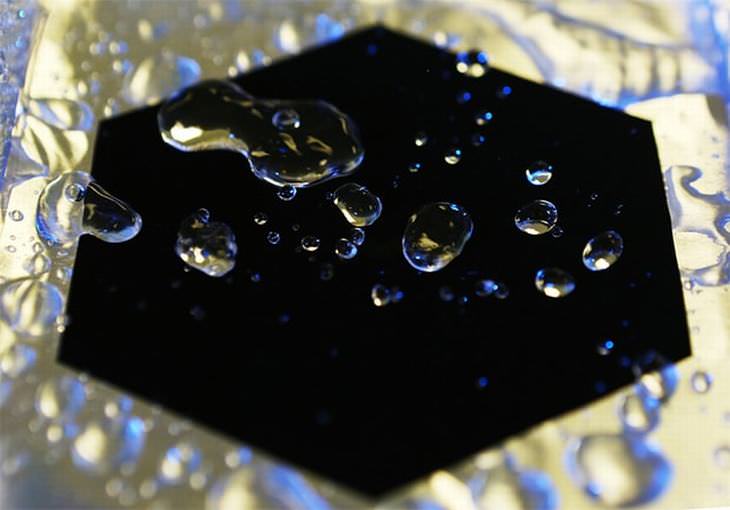


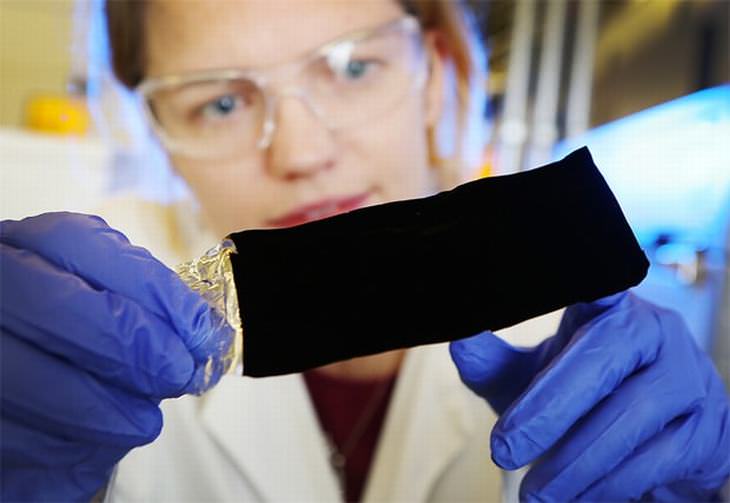
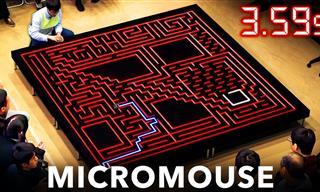
Welcome to the Fastest Maze-Solving Competition Ever Made...
Welcome to Micromouse, a competition for the quick of eyes and the quick of minds. This is the oldest robotics race.
 8:12
8:12
The Transistor: The Invention that Changed EVERYTHING....
We use transistors every day, all day. But how much do you know about this incredibly important invention?
 9:46
9:46
Just Like We Do With Plants- Humanity Can Now Sow Clouds
Cloud seeding - this is the term used to describe the process of "planting" rain clouds in the sky, and now it is finally possible.

These Places in Britain Are Ones That You'll Never Forget...
There's a lot more to the United Kingdom than just London, as these amazing destinations will prove to you. Take a look at 14 traveler hotspots in the UK.

8 Lies We've Been Told About Electricity
These incorrect facts about electricity have been perpetuated long enough. It's time to disprove them.

These High-Tech Foods Look Set to Change the World
Many amazing solutions are being invented in order to solve the problem of being able of feeding the globe's ever-increasing population. Take a look.

Take an Incredible Tour of Our Colossal Milky Way Galaxy
Fly Through the Milky Way Galaxy!

I Never Knew These Stunning Facts About Our Universe
If you thought you understood the universe, you'll be completely floored by this insane facts.
 13:55
13:55
WATCH: What Is the Fingerprint of God's Creation?
The golden pattern, describes the mathematical code of the universe. Is this the scientific evidence of God's will and plan?

These Things All Say Something About Your Body Or Mind
There are many things that you can determine about your body and mind just by looking at yourself. Here are 10 things that your body says about you.
 11:39
11:39
Is There Any Way To Destroy or Deflect Asteroids?
Watch an interview with Cathy Plesko, a leading scientist working on preparing for the dangers of an asteroid attack
 13:01
13:01
13 Incredible ROOF INNOVATIONS For Your House
Keep the roof of your house safe with these incredibly useful inventions.

Science Proves: These 10 Bible Stories Probably Did Happen
The Bible describes many seemingly supernatural cases, but today, science can show that they might have indeed happened.

Wow! Who Knew That Jupiter Was So Mesmerizing?
Take a look at Jupiter like you've never seen it before!
 14:49
14:49
This Man Built an Automatic Train System for Trash Cans!
Wouldn’t it be cool if a robot picked up and moved our garbage out for pickup with the push of a button?

This Humanoid Robot May Join the Workforce Very Soon...
Meet Digit – a bipedal robot that's ready to join human workers at warehouses around the world as early as 2024.
 12:02
12:02
10 Incredible Animal-Inspired Robots
Let's meet some incredibly realistic robotic animals.
 9:24
9:24
These Shoes Can Boost Your Walking Speed by 250%!
Robotic engineers have created shoes that, they claim, will increase your speed by 250%.
 11:13
11:13
NASA's Plan to Colonize the Moon by 2026
NASA has a Moon colonization plan that involves utilizing 3D printers to construct an entire space station by 2026. Here's what it will look like.

8 Lies We've Been Told About Electricity
These incorrect facts about electricity have been perpetuated long enough. It's time to disprove them.

Incredible: First-Ever Complete Map of an Insect's Brain
This incredible project is the first to completely map the brain of an insect, a monumental undertaking even for such a small creature.
 20:25
20:25
The BIGGEST Indoor Ocean in the World - Jaw-Dropping!
Did you know that the US Navy has a football field-sized indoor ocean that can create any wave?

6 Remarkable Yet Overlooked Minds That Shaped Our World
These underappreciated geniuses deserve more recognition.

Ancient Skull Found In China Unlike Any Human Ever Seen
A newly-discovered skull in China had baffled scientists. This could mean we might have discovered an entirely new species of humans.
 10:01
10:01
9 UNBELIEVABLE Ice Science Tricks That'l Amaze You
Prepare to be amazed as ice takes center stage in these mind-boggling and unconventional science experiments.
 4:27
4:27
Get a Sense of Scale of Just How Big SpaceX's Rockets Are
SpaceX is achieving incredible things in space, however it's difficult to picture just how big their rockets are. Take a look...

INTERACTIVE: A Guide to the Workings of the Human Body
The human body is the most complex machine known to man, and the amount of things it has to do to keep us alive is incredible. View this interactive guide now.

20 Incredible Inventions That We Have Completely Lost
Here are some of the most amazing ideas and inventions we have ever seen. But, sadly, all of them have been lost to science in the mysterious mists of history.

26 Incredible Facts About the Human Mind
The human brain is an interesting and powerful organ, which is why we've gathered 26 interesting facts about exactly how human psychology works.

Amazing Science: THIS is the True Scale of Our Universe...
Get a sense of the true scale and shape of the universe we've discovered so far.
 2:01
2:01
What Does the Appendix Actually DO?
Dr. Berg explains, in this video, all about the appendix and what it actually does in our body.

These Optical Illusions Will Shock Your Mind!
Optical illusions create miscommunication between our eyes and brain making, us see things that are not really there or not see things that are right in front of us. See for yourself.

These Archaeological Finds Left the World Mystified
Find out more about the most mysterious discoveries that archaeologists made.
 3:16
3:16
You Wouldn't Believe How Far Technology Has Come
Take a look at the advancements of technology in this video. Impressive.
 5:56
5:56
What on Earth Is a Black Hole? This Video Explains All...
What on Earth are black holes, how do they affect us, and should we be at all worried about their existence? Find out here.
 5:13
5:13
Whatever Happened to that Hole in the Ozone Layer?
Let's embark on this enlightening journey to better understand our atmosphere's health.

12 Mind-Blowing Archaeological Discoveries Of 2022
Archaeologists made some remarkable discoveries in 2022. Here is a look at the most fascinating ones.
 19:05
19:05
What’s it Like Using a 115-Inch TV?!
This colossal 115-Inch TV will transform your viewing experience forever.

25 Feats of Engineering that Leave Everyone Amazed
The amount of planning and sheer brain power it took to design and execute these structures, proving once again that there are true geniuses out there.

How Can You Recognize a Fake Gadget Before Buying It?
More often than not, you're almost unable to recognize them. So, before purchasing the product you want to have, bear in mind the following tips:
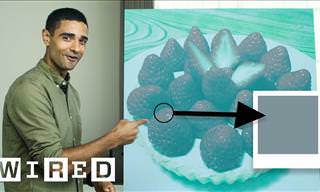 13:00
13:00
Visual Illusions: What Color Are These Strawberries?
Tricking our brain into believing that something is one color or shape than another thing is surprisingly easy, but can we explain why?
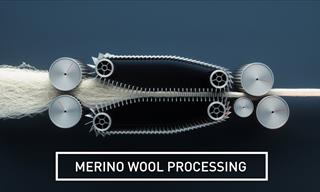 3:10
3:10
How It's Made: Merino Wool
Long before we invented moisture-wicking synthetic fibers, this type of wool did it naturally for centuries. Here's how it's produced.

25 Pics Showing How People in the Past Imagined the Future
Let’s see how the people of the past imagined the future and find out if their fun predictions came true with these 25 vintage pictures
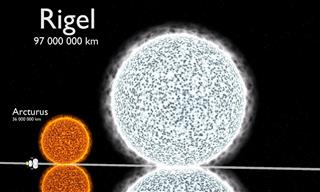 5:08
5:08
Experience the True Scale of Heavenly Bodies
Witness the true scale of planets, stars and galaxies in this incredible video that sheds light on size in our universe.

I Bet You Didn't Have a Clue About These Human Body Facts!
The human body is the most complex machine known to mankind, but I bet you don't know these 10 amazing facts about it...
 30:04
30:04
50 Crazy But True Facts About Dreams You Need to Know
Here are some strange and unusual facts about dreams that will surprise you.

19 Everyday Items That Started as Military Inventions
Look around your home, and you’ll surely find a handful of these items that were originally developed for the armed forces.


